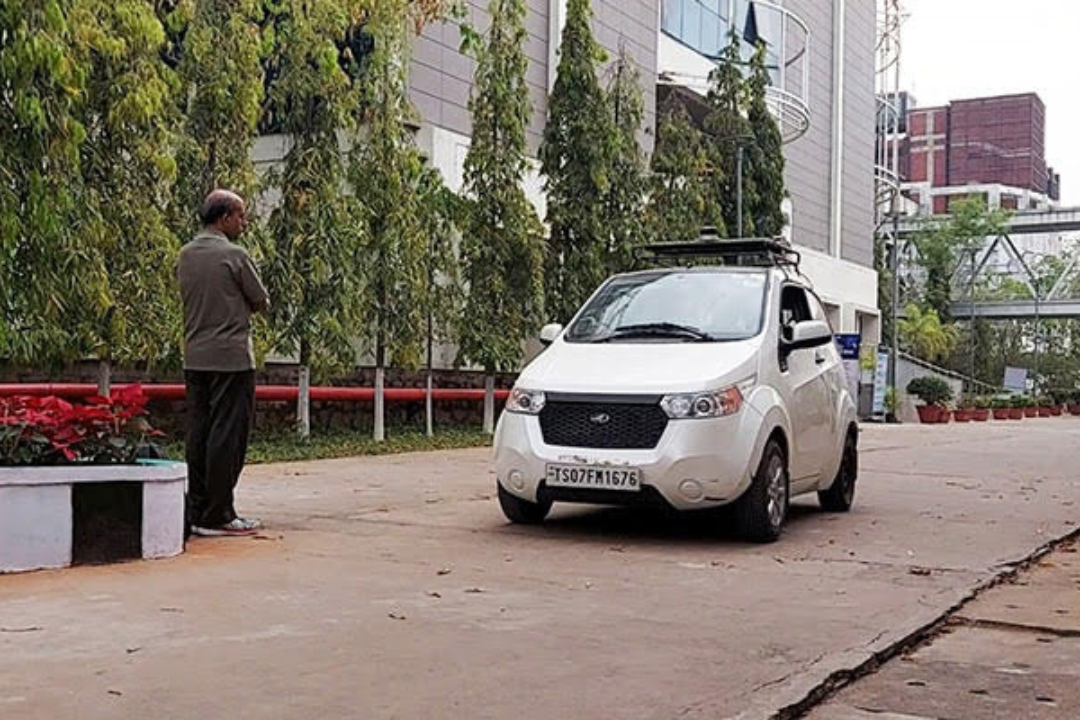IIIT Hyderabad has developed an advanced electric self-driving car capable of autonomous, point-to-point driving with collision avoidance over a broad area. The vehicle utilizes 3D LIDAR, depth cameras, GPS, and an Attitude and Heading Reference System (AHRS) to navigate, alongside a unique ability to process Open Set Natural Language commands for destination input.
The car’s navigation system employs SLAM-based point cloud mapping to create a detailed environment model, and a LIDAR-guided real-time state estimation ensures precise localization while driving. With the integration of Model Predictive Control for trajectory optimization, the car can generate optimal driving paths in real-time, offering a faster and more efficient navigation experience.
The research at IIITH focuses on open-set navigation, a concept inspired by human navigation, where directions are often given using landmarks and contextual cues. Instead of relying solely on memory-intensive high-definition maps or GPS systems, IIITH’s car utilizes real-world environmental landmarks, like “a bench” or “a football field,” to understand and navigate its surroundings.
This “open-vocabulary” approach allows the system to navigate to new, unseen locations without needing explicit prior training, providing a more flexible and scalable solution for autonomous driving. IIITH’s approach integrates language and visual understanding through a lightweight vision-language model (VLM), enabling the car to follow spoken instructions, such as “Take a right turn and stop near the food stall.”
By combining natural language processing (NLP) with visual scene understanding, the model can predict destinations in real-time while maintaining reliable, collision-free planning. To address potential conflicts, such as the car parking in a non-road area, IIITH has incorporated a custom planner within the neural network framework, ensuring that predictions align with real-world constraints and improving both prediction accuracy and planning quality. This differentiable end-to-end approach to planning and navigation is a key aspect of IIITH’s groundbreaking work in autonomous driving technology.
The International Institute of Information Technology (IIIT) Hyderabad is a premier research university located in Hyderabad, India. Established in 1998, IIIT Hyderabad is known for its cutting-edge research and education in areas such as computer science, electronics, and interdisciplinary fields. The institute offers undergraduate, postgraduate, and doctoral programs, with a strong emphasis on innovation and industry collaboration.
IIIT Hyderabad is renowned for its world-class faculty, state-of-the-art infrastructure, and vibrant academic environment. It is also home to numerous research labs and centers of excellence, focusing on areas like artificial intelligence, machine learning, data science, robotics, and cybersecurity. The institute is committed to fostering a culture of entrepreneurship and technological advancements, making it a leader in the field of information technology education and research in India.







